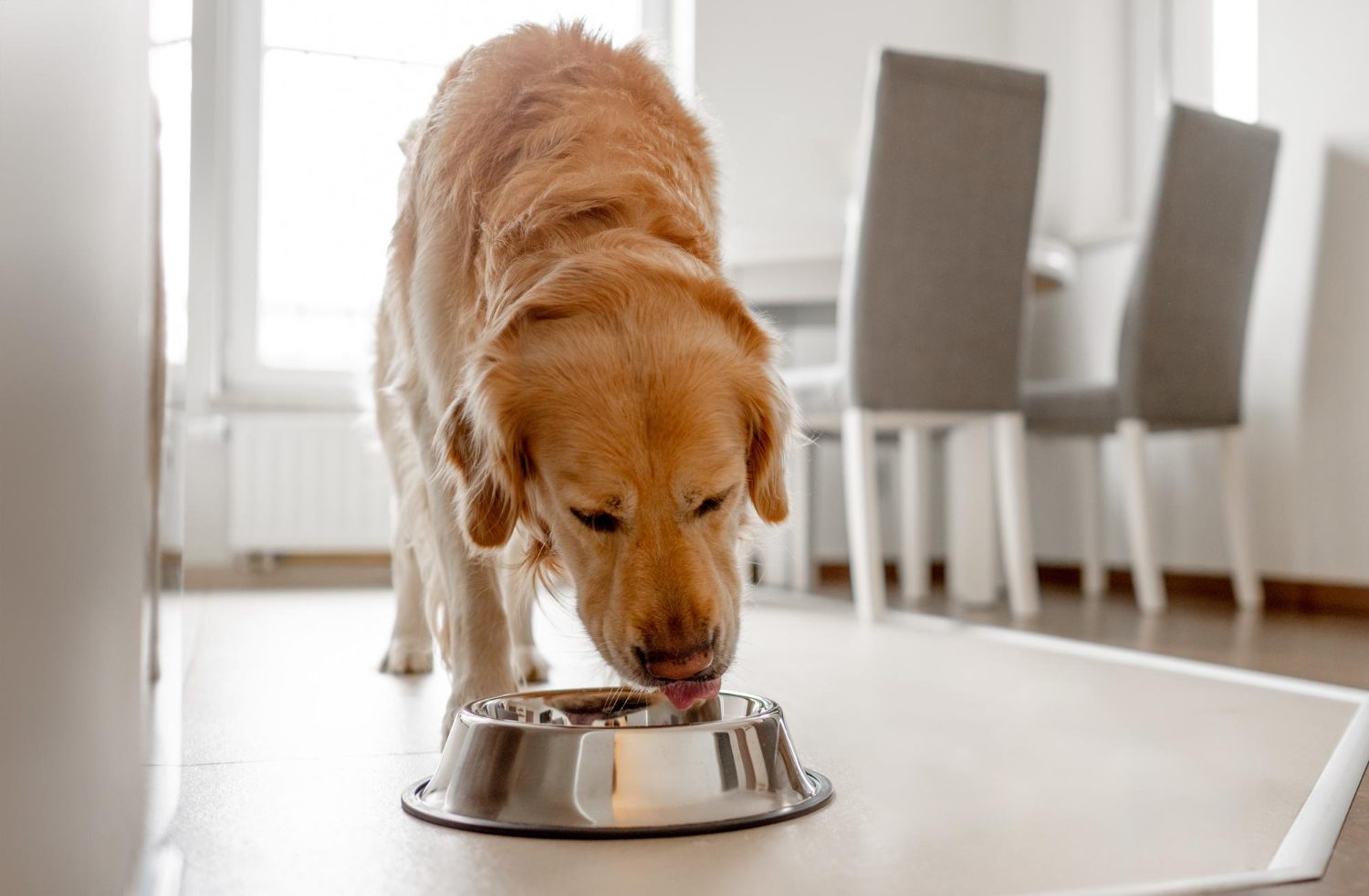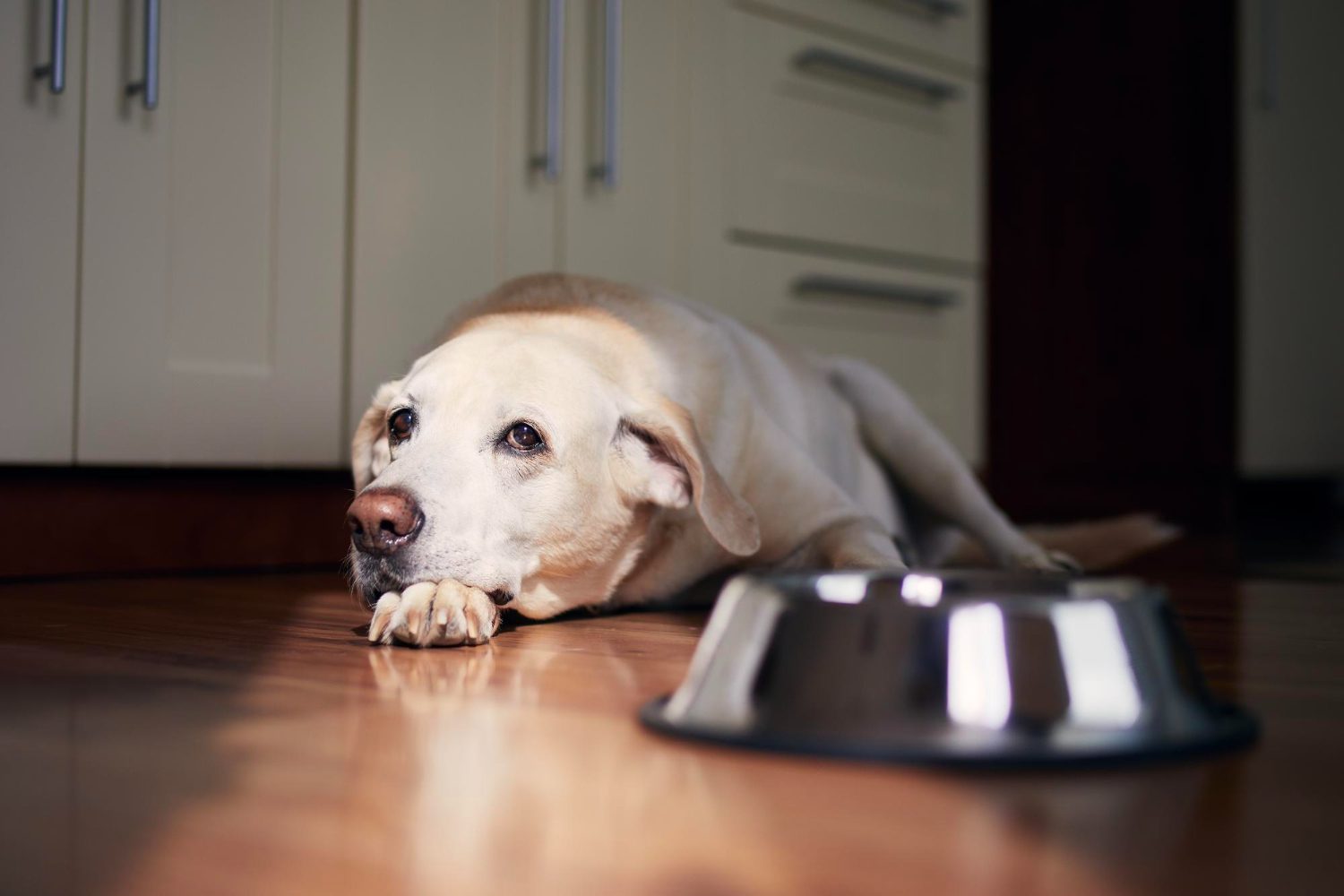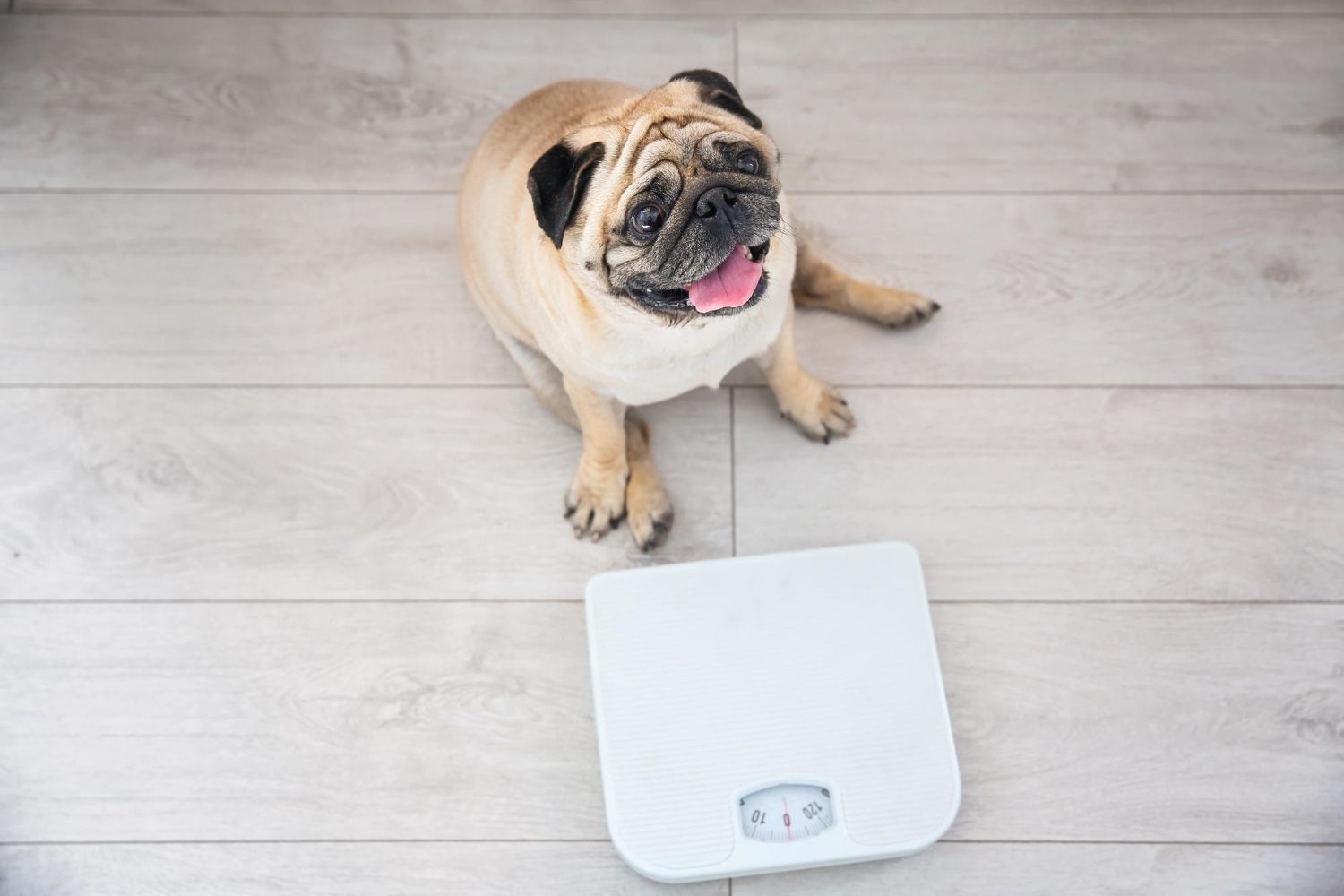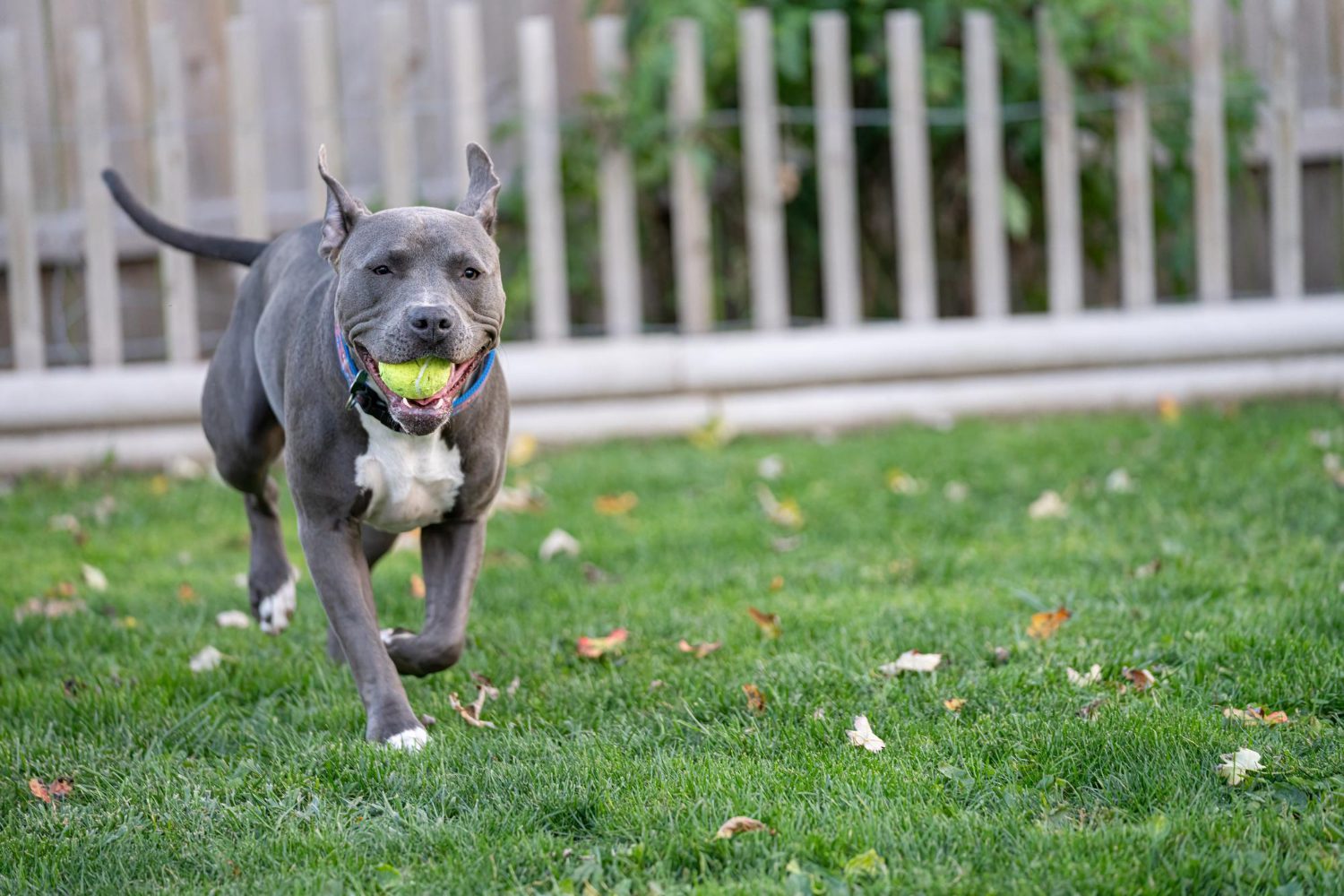Why Your Dog Won’t Eat: Causes and Solutions

By Evelyn Harcourt
septembre 29, 2025 - 1 min read
It is natural to be concerned if your dog suddenly turns his nose up at his dog food or refuses his favourite treat. While it is normal for dogs to decline their meals occasionally, ongoing food refusal can indicate that something is amiss.
This article talks about the most common medical and behavioural issues behind anorexia (poor appetite) in your furry friends. We also discuss when to be concerned, what signs would warrant a vet trip, and what you can do from home.

Common Reasons Why Dogs Stop Eating
Anorexia (a reduced appetite) in dogs can be partial or complete. The causes for a reduced appetite can be divided into a handful of categories.
Medical Causes of Appetite Loss
A wide range of medical issues are going to cause a lack of appetite, whether due to nausea, toxin build up, abdominal cramps, or general fatigue. With health conditions like pancreatitis, Addison’s disease, hepatitis, or even stomach upsets, one of the first signs can be a reduced appetite.
Interestingly, there are some medical issues (like diabetes and Cushing’s disease) which cause a dog to eat much more. These dogs can have seemingly insatiable appetites, though they won’t necessarily gain weight.
Behavioural Causes of Appetite Loss
Appetite is closely linked to a dog’s stress levels and general behaviour. For example, if your dog is spending their first night in kennels and they’re feeling anxious, the cortisol stress hormone could suppress their appetite, as part of the ‘fight or flight’ response.
Many dogs exhibit this behaviour if they suffer from separation anxiety. You can put a tasty treat down for them to eat, but they’ll not want to touch it until you’re home and their worries have subsided.
Environmental Factors Affecting Appetite
Your dog’s surroundings have a tangible effect on them. If the temperature is too high or too low, it’s really noisy, there are lots of guests over, or there’s a storm overhead, you may well find their food bowl is left untouched.
We also find that some dogs can struggle to eat normally when their routine has been disrupted. So, if your dog sometimes struggles to eat, try to maintain a calm home and a consistent schedule.
A Normal Reduction in Calorie Needs
Puppies need many more calories than adult dogs. A growing puppy requires two or even three times the amount of food compared to an adult.
Many owners become concerned when their older puppy (perhaps at about 6 months of age for a small breed, or 12 months for a large breed) suddenly starts to eat less. This change, however, is expected once the bulk of their growth is done.
Dogs should eat what they need, and calorie requirements vary depending on activity levels. Dogs burn fewer calories if they’re not moving as much. This can be seen on hot or rainy days when they’re less active or not walked. Again, this sort of reduction in appetite is normal and expected.

When Loss of Appetite is a Concern
Although there are lots of occasions when a low appetite is to be expected and will right itself, there are other times when it is a red flag.
Warning Signs to Look For
If your dog develops the following additional signs, there may be an issue:
- Vomiting or diarrhoea. This is especially true if these symptoms persist or if the dog cannot hold water down.
- Blood or mucus in their poop
- A bloated abdomen
- Pale or dry gums
- Nausea- which can present as drooling, lip licking, or grass eating
- Lethargy or weakness
- Bad breath, red gums, or oral swelling.
- Unintentional weight loss
Book your dog in to see an emergency vet if they seem weak, are unable to hold down food or have any blood in their vomit or stool.
How Long is Too Long Without Eating?
There is no rule set in stone here. For a young puppy, missing a single meal can be worrying. Conversely, a healthy adult can easily go a day or so without food and not feel the effect.
When reduced eating starts to affect the dog in other ways, like a reduction in energy or unexpected weight loss, this is a concern.

Solutions to Help Your Dog Eat Again
What is going to help your dog will depend on the cause of their anorexia.
Veterinary Treatments and Medical Care
For some dogs, improvement will not occur without veterinary intervention. Certainly, a vet check is the first step in investigating a prolonged lack of appetite, weight loss triggered by less eating, or unexplained anorexia.
At the vet clinic, your vet should weigh your dog and assess their Body Condition Score. They’ll also perform a full nose to tail check, paying particular attention to the teeth and mouth. If concerned, they may recommend running some tests, such as a blood test or abdominal imaging.
Medical care can include prescription diets, medicine like antibiotics or anti-inflammatories, or even dental treatments under anaesthetic to remove rotten teeth. Your vet will guide you on the best plan for your dog.
Adjusting Diet and Feeding Routines
Sometimes, the key will be in what you are offering and when. Some adult dogs do best on one meal a day, while many larger breeds should be given two meals spaced apart by about 8-12 hours.
It is a good rule of thumb not to offer food immediately before or after exercise. You will find what works best for your pet, with some preferring a meal as soon as they wake, and others feeling hungriest in the evening.
It is widely accepted that dogs do best on a predictable feeding schedule. So, whatever time you decide to give them their meal, try to stick to this every day.
Reducing Stress and Improving the Environment
Lower stress levels are conducive to heartier appetites. This means things like a structured and consistent routine, a calm and quiet home, and perhaps even a space in the house where the dog can be left alone to eat.
In households where there are young children or other pets, many dogs like to have their own eating spot- behind a playpen, baby gate or closed door.
If your dog suffers from chronic anxiety or behavioural issues such as separation anxiety or noise phobias, do consult with a canine behaviourist to see if things can be improved.
They may benefit hugely from interventions such as anxiolytic medicine and a behavioural modification programme.
Tips for Preventing Future Appetite Issues
To ensure your dog eats their meals, rule number one is to cut right back on any treats, titbits or chews you are giving them. Extras like this should make up no more than 10% of your dog’s daily calories. If they fill up on dental sticks and rawhide chews, they won’t have any space for their meals.
Ensure your pet is getting plenty of exercise and mental enrichment each day, and that their eating environment is a calm and comforting space for them. While eating, they should not feel threatened by people walking by or by other pets.
Beware of adding toppers like chicken or cheese to their dish. While this may seem clever, most dogs will pick off their preferred foods and ignore the remaining meal. Going forward, they may decide to go on a hunger strike, hoping a yummier alternative will be offered.

Learn More About When Your Dog Stops Eating
Please feel free to contact us if you’re concerned about your dog’s eating habits or if you feel that they’re not eating enough. We can discuss the next steps and book an appointment if needed.
Dog Won’t Eat FAQs
What Should I Do if My Dog Hasn’t Eaten in 24 Hours?
If your dog has been without food for a full day, it is possible that something is wrong. Monitor your dog closely for other symptoms and offer something tasty, like chicken or eggs, to see if this whets its appetite. If all food is being refused, book in to see your vet.
Can Stress Cause My Dog to Stop Eating?
Absolutely, stress (whether acute or chronic) has a profound impact on things like mood, sleep, and hunger. The stress hormone can cause a dog to go into ‘fight or flight’ mode, which temporarily slows down the digestive system and switches hunger off.
Should I Change My Dog’s Food to Something New If They Won’t Eat?
Offering tastier foods when one meal is refused or left unfinished can be a slippery slope. This may lead to a dog who refuses dog food and only eats chicken, which is not a nutritionally balanced diet. Ideally, find a complete dog food that your dog enjoys and stick to it.
Any Other Tips to Get My Dog Eating?
Short-term tips that can work well include adding warm water to kibble to make a gravy sauce, offering wet dog food rather than dry dog food, and serving meals in food puzzles such as Kongs or treat balls.
Continue reading

Signs a Cat is in Pain and How to Recognise Them
Learn how to recognise pain in your cat and the subtle signs to look out for.
Read article
What to Do If Your Dog Eats Chocolate?
Learn what to do if your dog eats chocolate and the signs of toxicity to look out for.
Read article
Signs of Hypothermia in a Dog and How to Treat It
Learn the signs of dog hypothermia and how to treat it quickly and safely.
Read article